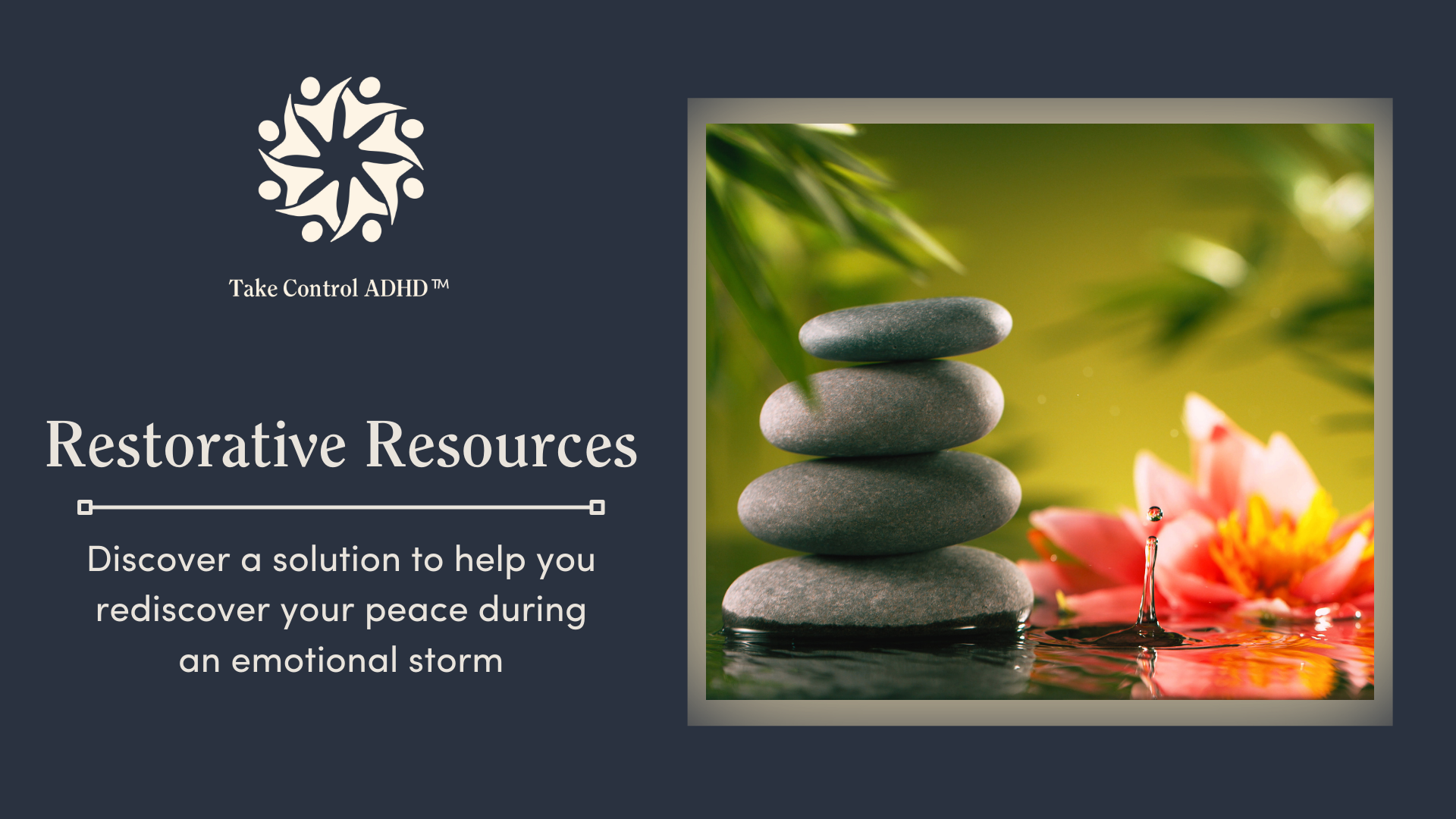Restorative Resources
How do you normally handle moments where you're feeling intense emotions, like shame?
Some people may try to ignore it or hide it—"If I don't think about it, maybe it'll go away."
Other people may focus all their energy on those feelings; unable to move on to anything else. It can feel like this is all they'll ever feel from now on.
Then, there are others that can recognize those intense feelings, and they decide to do something to alleviate those feelings in the moment.
Wise words from a long-time friend of the podcast
Recently, on Taking Control: The ADHD Podcast, Pete and I spoke with long-time friend of the show, James Ochoa, LPC. During the conversation, as we were discussing those moments when you feel stuck in those inevitable shame spirals, he brought up a concept he called "resourcing".
James explained that resourcing is a term he uses to describe how we find ways to get back our internal balance and emotional calm when things are feeling chaotic.
The act of resourcing doesn't need to be difficult or even take very long. It can be as simple as finding a few activities that you can use to help you re-center and rebalance after experiencing an emotional storm.
Discover your resources
From the definition James Ochoa provided, it seems like just about anything can provide a resource or an anchor to bring back peace when we need it the most.
It could be a calming breathing technique, taking a quiet walk, or listening to a certain sound or song. Everyone is different, so the resources you use may not be the same as someone else, but the important thing is that it works for you when you need it to.
Now it's your turn
I want to encourage you to discover your own restorative resources. Decide what tends to work best for you to calm you when your inner storms are raging. Then, you can make a list of your trusted resources. Be sure to keep the list handy for those times when you need a life raft in the middle of an emotional tidal wave.
Thank you for your time and attention,
Nikki

